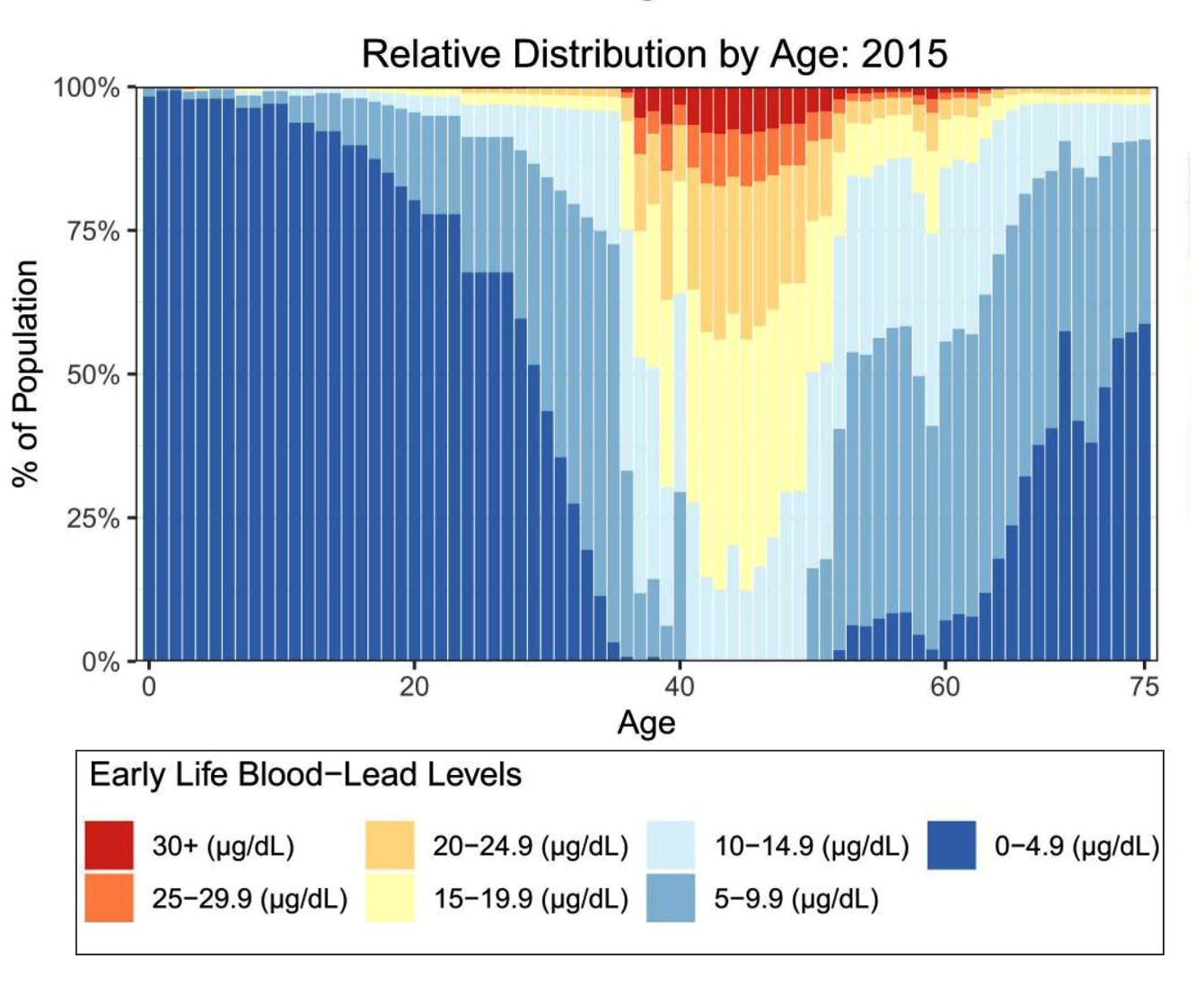9 things to know about lead’s health risks — and how to curb them
Even without visible signs, this heavy metal can lower IQ, cause heart risks and much more

Exposure to lead, a heavy metal, can cause IQ-robbing brain damage in children. The changes may leave no visible signs. But for the rest of their lives, affected individuals may have a harder time with mental tasks and develop behavioral or other health problems.
Natalia Lebedinskaia/Moment/Getty Images Plus
Lead is a toxic heavy metal. No level of exposure is considered safe. And that’s a problem, because lead can be found in many places where people live, work and play.
Lead is best known for its risks to the nervous system, especially the brain. Still, notes Nicole Jones, “We know lead affects all systems of your body.” And that’s true “for adults and for kids,” she adds. Jones is an epidemiologist — a disease detective — in Flint, Mich. She works for Michigan State University and the Hurley Children’s Hospital Public Health Initiative.
Especially troubling, most people with dangerous levels of lead in their bodies show and feel no symptoms.
In U.S. children, high lead levels are defined as 3.5 micrograms per tenth of a liter (µg/dL) of blood or more. Kids under 5, whose brains are developing quickly, would be in the top 2.5 percent of all children with that much lead in their blood. So says the Centers for Disease Control and Prevention in Atlanta, Ga.
Do you have a science question? We can help!
Submit your question here, and we might answer it an upcoming issue of Science News Explores
More than 170 million people in the United States likely had high levels of lead in their blood as children. That’s “over half the U.S. population,” says Michael McFarland. And, he adds, that’s “a conservative estimate.” McFarland is a sociologist at Florida State University in Tallahassee. He’s also a demographer, someone who studies data on human populations.
To reach that 170 million figure, McFarland and others analyzed data from a national database. It reported levels of lead in the blood of children born between 1976 and 2016. McFarland’s team also estimated lead exposures from gasoline between 1940 and 1975. Lead was commonly used as an octane-booster in vehicle fuel back then. So auto emissions spewed lots of lead into the air.
Use of leaded gasoline was highest from 1960 to 1980. During that time, average blood-lead levels among Americans were generally three to five times higher than today’s “high” threshold of 3.5 µg/dL for kids, McFarland’s team found. It shared these estimates of U.S. lead exposures in 2022 in Proceedings of the National Academy of Sciences.
The U.S. phased out lead in gasoline back in 1996. Many other industrial countries did it at about the same time. This is one reason dangerous exposures to lead have gone down over time. But other sources of lead remain. So here are nine things to know about lead exposure.

1. Lead can harm your brain, including IQ
For kids, the big concern is how lead affects the brain, notes Jones. Indeed, lead can permanently lower IQ. Also known as intelligence quotient, IQ is a measure of someone’s ability to think and reason. Especially in children, even very low lead exposures can lower IQ. That’s because young brains develop rapidly and in important ways. So, during that time, the brain is especially vulnerable to lead.
The 2022 study by McFarland and his team at Florida State estimated how much lead exposure in the United States has affected our brains. From 1940 through 2015, IQ drops due to lead averaged 2.6 points per person, they calculated. For people born between 1966 and 1970, the average drop was greater — about 5.9 IQ points.

That drop could be enough for someone with a low IQ to no longer be able to function on their own, McFarland explains. Or it could mean not making the cut to get into your first-choice college. The loss might even mean the world misses out on some big discovery.
Lead also affects cognitive skills. Those include things like paying attention, solving problems, learning and recalling things. The brain also lets us think about possible outcomes before we do something. “Lead has the ability to negatively impact all of these important brain-based skills,” says Crystal Cederna. She’s a child psychologist at Michigan State and Hurley Children’s Hospital.
Consider one study from children in Chicago, Ill. Researchers compared third graders’ blood-lead levels and their performance on standardized tests. Higher lead levels, they found, were linked with lower test scores. Even at low levels, the data showed decreases in math and reading scores for each extra µg/dL of lead in blood.
2. Lead can affect mental health and behavior
Lead can impact mental health, too. One 2009 study looked at blood-lead levels in people 20 to 39 years old. It compared the fifth with the highest lead levels to the fifth with the lowest. People in the highest lead group had twice the risk of having major depression. For panic disorder, the risk was nearly five times as high.
A study from a decade ago asked teachers and parents about preschool children in China. Children with higher levels of lead in their blood were more likely to show signs of depression and anxiety. The researchers also saw a link between higher levels of lead and reported behavior problems.
More recently, Jerel Ezell at the University of California, Berkeley, and others surveyed caregivers of young children in Flint. People took the survey five years after that city experienced a massive leaching of lead into its drinking water. Reports of problem behaviors were more likely to show up in children with high levels of lead in their blood.
The team shared its findings in the February 2023 Journal of Ethnic and Racial Disparities.
An August 2023 analysis of 17 other studies found links between high levels of lead in the body and increased risks for criminal behavior in adults.

Educators and Parents, Sign Up for The Cheat Sheet
Weekly updates to help you use Science News Explores in the learning environment
Thank you for signing up!
There was a problem signing you up.
3. Lead can play a role in many other health issues
Lead has been linked to abdominal pain and intestinal problems. It can impair the immune system and may even play a role in some types of cancer. Even at lower levels, lead can increase the risks for high blood pressure. The metal also adds to risks for such things as heart disease and strokes. Lead can limit kidney function, too. Kidneys clean wastes from the blood.
Lead can slow children’s growth. Research has linked greater concentrations in blood-lead levels to shorter height and lower body weight.
“Exposure to lead during pregnancy can cause low birth weight,” notes Muzhe Yang. He’s an economist at Lehigh University in Bethlehem, Pa. In 2022, he and economist Dhaval Dave at Bentley University in Waltham, Mass., wrote about this in the Journal of Health Economics.
The team focused on data for babies born in Newark, N.J., from 2011 to 2019. Water from one of the city’s two water-treatment plants became more acidic in 2015. As a result, tap water from this plant generally leached more lead from pipes than did water from the other plant.
After that happened, moms who got the tap water with more lead were more likely to give birth to babies with “low” birth weights. These babies weighed less than 2,500 grams, or about 5.5 pounds. Babies whose moms had more lead also were more likely to be born prematurely, Yang and Dave found.
4. Plumbing is a major source
Lead is an element that exists naturally in the environment. But many people come into contact with the metal today as a result of the metal’s long and widespread use in plumbing pipes and faucets.
The U.S. Environmental Protection Agency estimates that the pipes supplying water in some 9.2 million U.S. homes contain lead. Most affected homes were built before 1986. That’s when the country finally banned lead pipes for new homes. Older faucets or other plumbing fixtures often contain lead, too.
In theory, lead pipes should not be a problem. But if they start to corrode or if slightly acidic water runs through them, small amounts of their lead can leach into water. Most water-treatment plants use chemicals to limit corrosion. When that treatment doesn’t work well, lead problems can emerge — as they have in Flint, Newark and elsewhere.

5. Beware of old paint
Another big source of lead: paint. The U.S. government banned the use of lead in paint back in 1978. Still, layers of leaded paint may sit under coats of newer wall coverings. If that old paint chips or peels, bits of its lead can become part of house dust. Friction can also release lead from old paint. That might happen when doors or windows open and close.
Outdoors, lead may build up in soil from paint dust or as a result of those old gasoline emissions. Even decades later, plants may take that metal up from soil. People who eat those plants can end up eating lead, too.
6. Poverty can increase risk of lead exposure
Lead issues are more likely to show up in communities where infrastructure — like water-supply pipes and water-treatment plants — “is not maintained or upgraded all the time,” says Ezell at Berkeley. He studies social factors, such as poverty and city systems, that can affect disease rates. And the risks for lead exposure are not the same everywhere, he notes.
As it turns out, lead-linked health problems often emerge in communities where a larger percentage of people live in poverty. Such areas, Ezell says, also tend to have less tax money to pay for upgrades to drinking-water systems.
7. Exposures are dropping but not gone
Governments have been working for decades to cut people’s exposures to lead. The United States ended the use of leaded gasoline for most vehicles in 1996. House paint is no longer allowed to contain lead. New homes cannot use lead pipes and faucets. And public-education programs have sounded the alarm about health problems linked to lead.
Those efforts have made a difference. One study showed that the average U.S. blood-lead levels around 2016 were about 93 percent lower than in 1976 to 1980. But challenges remain, those researchers add. As the 2014 Flint, Mich., water crisis showed, big exposures can still crop up.
Yang says his team’s study underscores that lead pipes should be replaced as soon as possible. “It is not a question of whether we should do it,” he says, “but … how quickly we can do it.”
Work to remove those pipes should speed up in the next few years. Under a 2021 law, the U.S. government plans to invest $15 billion to remove lead pipes that carry water to homes. And rules proposed in November 2023 call for U.S. public water systems to replace lead water pipes within 10 years.

8. Help exists for those who have been exposed
“Obviously our first goal is always to reduce exposure,” says Jeanette Stignone. She’s an environmental epidemiologist at Columbia University in New York City. But, she adds, lead exposure isn’t just a case of “it happened and now you’re stuck with the consequences.”
For instance, where levels are very high, doctors may prescribe a medicine to help remove the heavy metal from blood. This process is called chelation (Key-LAY-shun). Not everyone responds well, and there can be side effects. But in severe cases, it is one way to help remove some of the metal before it can do much damage.
For kids with lower levels of exposure, extra educational support can help. In one study, Stignone and others found that kids who got this help before age three did better on standard tests in third grade than did kids who didn’t get those services. The difference was even greater when the comparison was limited to children with high levels of lead in their blood.
9. Cold water is safest. And let taps run before drinking
“Whenever possible, it’s always best to drink fresh, filtered water,” says Cederna at Michigan State. Some cities and nonprofit groups may provide water filters for free. Check with your local water department.
Families also can get their tap water tested if they want to know if its lead levels are above government standards.
Probably the easiest thing you can do: Let the tap run before getting the water you will drink or use in cooking. Lead can build up in water as it sits longer. So letting the water run for a few minutes can help flush it out. The U.S. EPA adds that people should also clean any particles from aerators (those little screen-like filters) at the end of the tap. The grit inside may hold bits of lead.
Plus, always use only cold water for drinking or cooking. Hot water can increase the risk of lead leaching from pipes.







